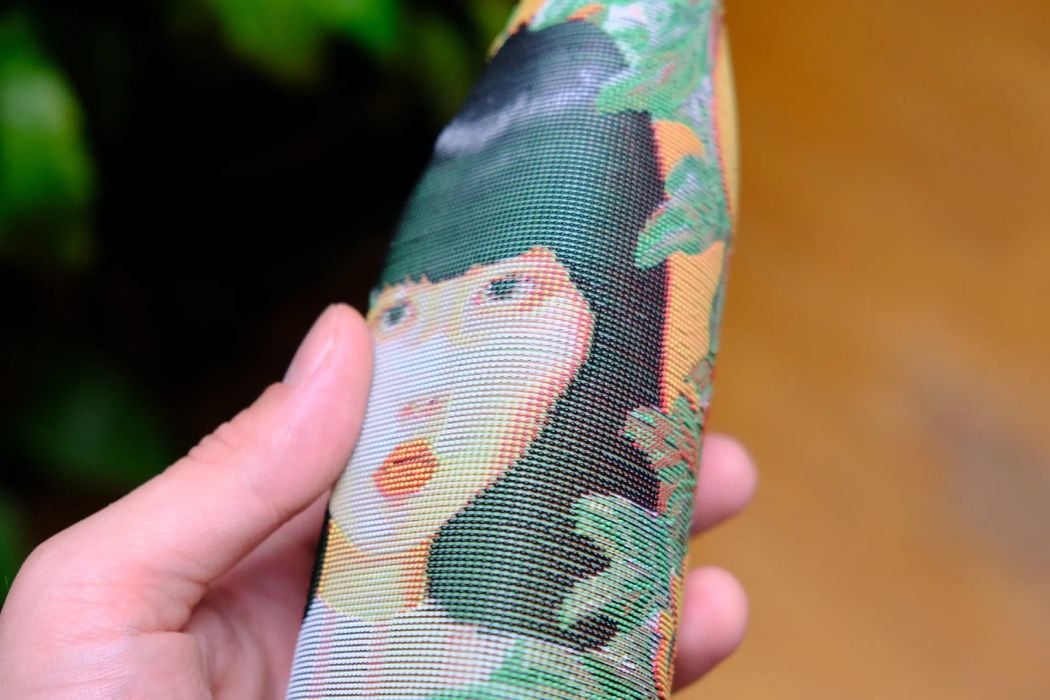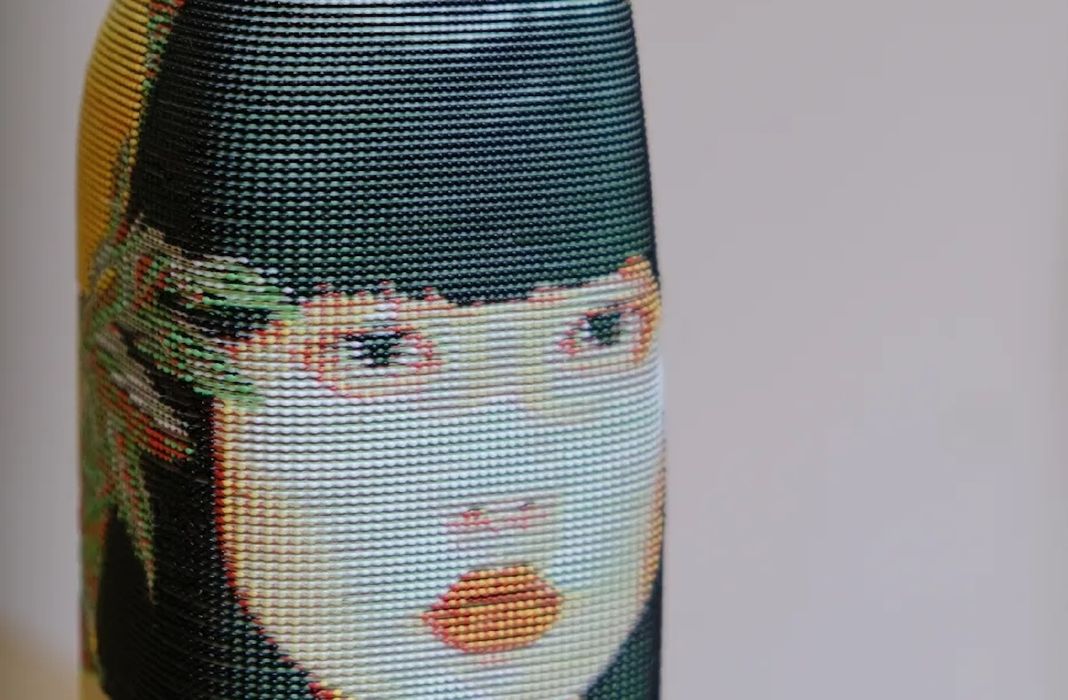
This has to be one of the most unusual 3D prints I’ve ever seen.
You’re looking at a 3D print produced on a Prusa XL 5-tool FFF device in multiple colors. This was NOT painted: it was printed using five differently colored filaments in a single print job. This is not made from full color 3D print technology such as PolyJet, Mimaki or others. It’s just plain old FFF 3D printing on a desktop device.
Made by Printables contributor Medium Things, this item is unique. They described the process to do so in a Reddit post:
”The image is mapped on the surface and sliced with an algorithm that convert RGB values to 5 colors with a halftone dithering effect, here I used green red yellow black and white.
I used the RGB->CMYKW conversion explained in this research paper, the halftone effect is a variation on this research paper.
All gcode is custom, made with Grasshopper for Rhino.”
The research paper is from 2016, and describes complex methods for developing uniform colors in 3D printing using dithering techniques. Dithering is a technique where noise is introduced to randomize errors and improve color and detail accuracy.

Somehow Medium Things has adapted this approach into a Grasshopper-based system to slice 3D models. The system then accepted an image and created GCODE that produces the astonishing vase above.
The GCODE for this print has been uploaded to Printables for anyone to use. That is, if you happen to have a Prusa XL 5-tool multichanger device with tools 1-5 loaded with green, red, yellow, black and white, respectively.
Something like this is only achievable on a tool changing 3D printer, as each of the five colors on the Prusa XL are immediately ready to go: they are separately loaded on each toolhead.
This would be a disaster if 3D printed on single-tool multimaterial 3D printer, like the Bambu Lab X1C. That’s because the countless color changes would generate a staggering amount of poop. There would be five color swaps on each layer, so a 1500 layer vase would generate an incredible 7500 purges. Each color change on each layer would make a poop, and it’s likely the amount of poop would outweigh the model by several times. The print would also take forever to complete, although a bit faster and less wasteful if printed sideways.
I consider this print a proof of concept for what may come in the future. Existing slicing software cannot generate code to do this — but it is now very clear that the machinery can do so.
The next step for software is to consider integration this algorithm into the tools and permit its use by everyone.
Someday we’ll all have multicolor capable 3D printing systems that can do this. But not today.
Via Reddit, Printables, Instagram, Research Paper
